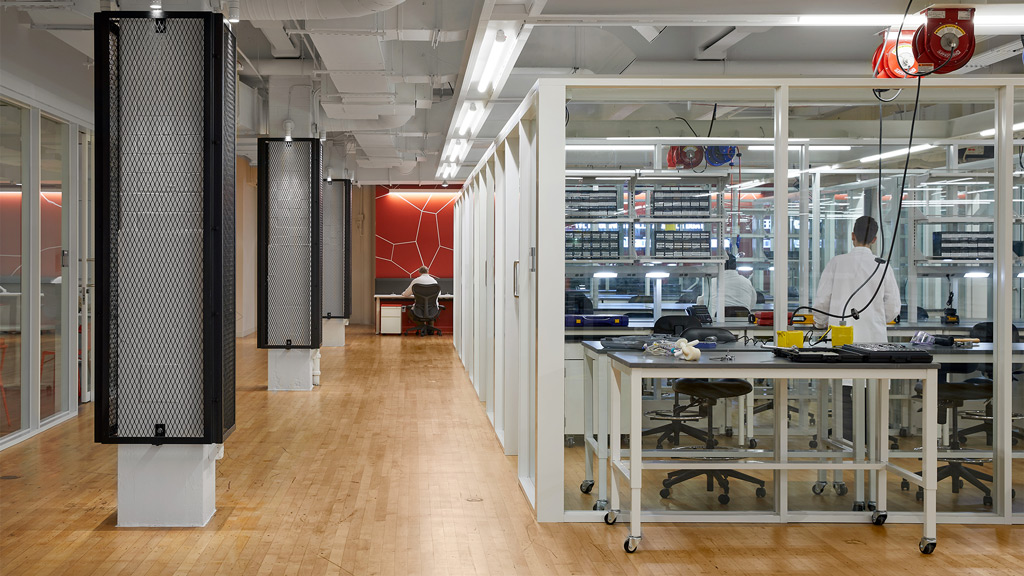Real Estate’s Big Pivot to Science
January 05, 2021 | By Darrel Fullbright and Justin Cratty
The life sciences industry has become the great hope in real estate as we face the most significant public health crisis in a century. While other industries have slowed and suffered as a result of sheltering in place and working from home, science facilities have remained operational and have even thrived in prime markets as the industry continues to search for medical breakthroughs. According to CBRE, venture capital investment in U.S. life sciences companies for the year ending Q2 2020 was $17.8 billion — an all-time record for any yearlong stretch.
The downturn in other industries has left buildings vacant. The life science market, on the other hand, continues to experience some of the lowest vacancy and highest employment rates. For life science organizations in the key markets, there simply remains a shortage of available research-capable space. Real estate has a clear opportunity to make a big pivot to science.
Like never before, the availability of non-science space, combined with the unprecedented demand for science, is driving building owners and developers alike to consider converting existing non-lab space into facilities that can support research and development activities.
The Challenge
In contrast to workplace environments that can more readily adapt to constraints of existing buildings, science programs vary widely. The built environment must respond directly to scientific needs and the building systems must be designed to support the resulting performance requirements. In addition to meeting the varying needs of science, these building systems must also be designed to protect the health and safety of the occupants from the chemical and biological materials used. This makes the process to adaptively-reuse these existing facilities for science-related program complex, potentially costly, and requires experienced design, engineering, and construction professionals to guide the conversion.
How is a science building different?
While there is no one-size-fits-all approach to meet every scientific need, the goal is to create a framework and strategy that will be responsive to the needs of future tenants. The key challenge to address is marrying the unique aspects of an existing building with the unique specifications for science facilities and user organizations that the building may house — from basic biology and chemistry to bioinformatics and clinical research.
In build-to-suit circumstances where the end user is known, the parameters for conversion can be developed around the specific needs of the user, while also taking into consideration future adaptability. On the other hand, spec lab scenarios present a potentially taller challenge, requiring test-fit iterations aligned with target tenant types and the most likely set of science uses.
In these cases, a detailed facilities assessment of the existing building — combined with a strong understanding of these tenants' needs and local market forces — can establish a checklist of requirements, enhancements, or modifications that need to be achieved in order for the facility to support the new functions.
What are the specific differences?
When evaluating a building for conversion to science functions, there are three main areas to consider — each with their own complexities:
1. Planning & Architecture- Code Compliance: Science facilities must prioritize health and safety of the occupants — as well as the neighboring community. With a possible change of occupancy or use, building codes may require changes or upgrades to egress systems and fire protection measures.
- Location and Zoning: Conversions from office to research or science functions are the most common and straightforward, but other building typologies, such as high-rise office buildings, warehouses, or retail spaces may require additional modifications including new or taller utility penthouses, a new façade for better ventilation, or power plants on intermediate floors.
- Local Planning: In addition to a change of use, exterior modifications to the rooftop and utility yard may require additional approvals from local planning departments.
- Site and Service: Most science facilities require additional loading dock and utility yard space to receive, store, distribute, and dispose of hazardous materials. This space often needs to be separate from the shipping and receiving of normal office supplies and may require a specially designed storage area to protect building occupants.
- Separate Service Elevator: In science buildings, it’s good practice to have a separate service elevator for delivery and removal of hazardous materials.
- Hazardous Materials: Building codes set the amount of hazardous materials allowed in a control zone. Many low-rise, three- or four-story office and research facilities are able to meet these limits without much change to the existing infrastructure. However, these limits generally decrease as buildings get taller, which may restrict certain types of research. A change in occupancy or use classification may allow for more versatile high-rise labs, but may also require upgrades to fire protection, power, and exhaust systems.
- Schedules: While reuse can often accelerate construction schedules because the primary building elements are already in place, those timelines may be longer compared to standard repositioning due to the enhanced infrastructure systems and additional lead time for structural upgrades if required.
- Column Spacing: An ideal 11-foot (3.3m) lab planning module drives larger column bays than offices, which may require additional creativity to avoid awkward conditions like columns in the middle of aisles or partitions in the middle of windows.
- Floor and Roof Loads: A good rule for science buildings is to design for 100 pounds per square foot (5.0 kn/m2) as a uniform live load. Because office building structural systems are often designed to the code minimum, which for IBC is 50 psf (2.4 kn/m2) or 80 psf (3.8 kn/m2) for upper floors, sometimes warehouse and industrial buildings with stouter frame can be better candidates for repositioning.
- Structural Vibration: Scientific equipment requires controlled environmental conditions and certain devices, such as electron microscopes, need low levels of structural vibration to function correctly. While existing concrete slabs on-grade typically meet the performance criteria for science, upper floors may require other solutions to dampen vibrations.
- Floor-to-Floor Height: Between 14 feet and 16 feet (4.25 - 4.75m) of floor-to-floor height is good practice for science buildings, and converting an existing building may require careful coordination of the HVAC systems to maximize ceiling heights and natural light. Adaptive reuse of structures with smaller floor-to-floor is possible but can create complex HVAC design to support the increased fresh air and exhaust requirements and may limit longer term system flexibility.
- Ventilation Systems:The amount and type of ventilation necessary will vary based on the type of lab use and occupational risk involved. Typical biology and chemistry labs require all air be exhausted and not recirculated for safety and cleanliness requirements, placing higher demand on heating and cooling infrastructure.
- Main Electrical Service: Scientific buildings can sometimes require more than twice the power of a typical office building due to the additional ventilation systems and power densities required to support scientific equipment. Upgrades to electrical service likely requires involvement from the city or utility providers — which can increase costs and extend schedules.
- Standby Power Generator: Typically required to protect critical infrastructure systems, ongoing research, and sensitive products. If a new generator is required, it may also consume onsite landscaping or parking spaces and require special permitting.
- All-Electric Buildings: Many jurisdictions are adopting “Reach” or “Stretch” building codes to encourage clean air and renewable energy initiatives. The elimination of natural gas in buildings and increasing demand for electric vehicle charging stations may further increase a building’s overall power needs.
By gaining a deeper understanding of a building’s unique characteristics, developers and building owners can capitalize on these existing assets and invest in what best suits the market. But adaptive reuse projects can have an impact beyond simply meeting demand. As the availability of existing buildings will likely continue to increase in today’s economy, this strategy can address the explosive need for research-ready space, while also contributing to the revitalization of urban business districts that have been left vacant by the pandemic. With the right design decisions, adaptive reuse solutions have the potential to drive some of the most progressive buildings for science.
For media inquiries, email .

